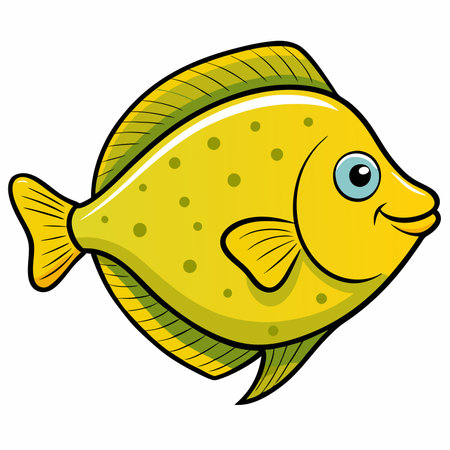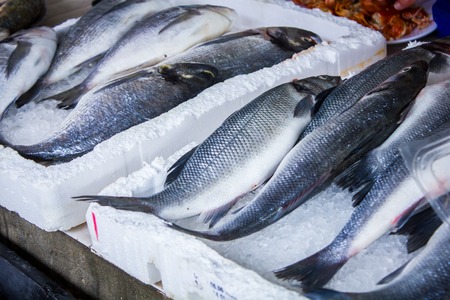Understanding Your Aquarium Ecosystem
If you’re setting up a home aquarium in the UK, understanding your aquatic ecosystem is the first step to preventing and managing common fish diseases. British tap water varies significantly across regions—hard in London, soft in Scotland—so tailoring your set-up to local conditions is essential for healthy fish. Start by testing your water source for pH, hardness, and chlorine levels; most aquarists find it helpful to keep a simple record like the table below.
| Region | Typical Water Hardness | Common pH Range |
|---|---|---|
| London & South East | Hard | 7.0–8.5 |
| Midlands | Moderate | 6.5–7.5 |
| Northern England & Scotland | Soft | 6.0–7.0 |
A balanced ecosystem relies on more than just water chemistry. Consider your tank’s size, filtration system, and plant life. Opt for British-native or well-adapted species where possible, as these are generally more resilient to local conditions. Regular maintenance—weekly partial water changes and gravel cleaning—helps prevent the build-up of harmful bacteria and algae, which can trigger disease outbreaks. Creating a stable environment not only keeps your fish vibrant but also makes it much easier to spot early signs of illness, ensuring swift treatment with minimal stress for your aquatic companions.
Spotting Common Fish Illnesses in Britain
When it comes to keeping an aquarium in the UK, recognising the early signs of fish diseases is essential for maintaining a healthy aquatic environment. British aquarists often encounter a handful of prevalent illnesses, each with distinct symptoms that can be spotted with a keen eye and regular observation.
Key Diseases in British Aquariums
Below is a handy table outlining some of the most common fish diseases found in home aquariums across Britain, along with their tell-tale signs and typical triggers:
| Disease | Symptoms | Common Causes |
|---|---|---|
| White Spot (Ich) | Tiny white spots on fins and body, rapid gill movement, rubbing against objects | Sudden temperature changes, new fish introduction |
| Fin Rot | Fraying or disintegrating fins, red edges on fins | Poor water quality, bacterial infection |
| Fungal Infections | Cotton wool-like growths on skin or gills | Injury, stress, dirty tank conditions |
| Swim Bladder Disease | Difficulty swimming upright, floating or sinking at the surface/bottom | Overfeeding, constipation, poor diet |
Spotting Early Warning Signs
Keen observation is your best defence. Watch for unusual behaviour such as lethargy, loss of appetite, erratic swimming or isolation from other fish. Discolouration, visible wounds or fuzzy patches should also raise alarm bells.
The Importance of Routine Checks
Make it a habit to inspect your aquarium daily. Many seasoned British fishkeepers recommend using a small torch (or torchlight) to gently illuminate your fish during feeding time for a closer look at their scales and fins without disturbing them.
Aesthetic Tip for British Homes
Position your tank where natural daylight enhances visibility but never in direct sun—this helps you spot changes quickly while complementing your homes aesthetic charm.

3. Routine Prevention Techniques
Establishing a regular maintenance routine is essential for keeping your aquarium healthy and your fish free from common diseases. In the UK, aquarists often rely on a combination of daily and weekly practices to prevent issues before they arise. Below, you’ll find practical steps, tailored to British homes, that help maintain an optimal aquatic environment year-round.
Daily Checks
A quick daily inspection goes a long way in preventing disease outbreaks. Watch your fish for any changes in behaviour—such as listlessness or loss of appetite—and check for visible signs like white spots or frayed fins. Ensure all equipment (filters, heaters, lights) is functioning correctly and that water levels are consistent.
Weekly Maintenance Schedule
| Task | Recommended Frequency | UK-Specific Tip |
|---|---|---|
| Partial Water Change (20-25%) | Weekly | Use dechlorinated tap water to match local water hardness |
| Gravel Vacuuming | Weekly | Focus on areas where uneaten food collects |
| Filter Rinse (in tank water) | Fortnightly | Avoid washing filters under the tap to preserve beneficial bacteria |
| Test Water Parameters (pH, ammonia, nitrite, nitrate) | Weekly | Kits available at most British aquarist shops; record results for trends |
| Check Equipment Functionality | Weekly | Monitor heater settings during colder months in the UK |
Additional Tips for British Aquariums
The UK’s variable climate can affect aquarium conditions. During winter, ensure heaters are reliable and consider insulating your tank if placed near draughty windows. In summer, monitor for overheating and use a fan or open lid (with caution) if necessary. Always source fish and plants from reputable UK suppliers to minimise the introduction of pests and pathogens.
4. Effective Treatments from Your Local Aquatic Shop
When it comes to tackling common fish diseases, your local British aquatic shop is a treasure trove of reputable remedies and expert advice. Whether you’re nestled in a cosy village or living in the heart of London, most pet stores across the UK stock treatments that are both trusted and readily available for hobbyists and seasoned aquarists alike.
What to Look For in a British Pet Store
Quality, safety, and suitability for your specific tank set-up should be at the top of your checklist. Here are some quintessential things to consider:
- Brand Reputation: Opt for established British brands or those recommended by experienced staff.
- Product Range: A good store will offer treatments for common issues like white spot, fin rot, and fungal infections.
- Clear Labelling: Ensure instructions are clear and treatments are appropriate for freshwater or marine environments as needed.
- Expert Guidance: Knowledgeable staff can recommend the best remedy tailored to your aquarium’s needs.
Table of Common Fish Diseases & Trusted Treatments
| Disease | Symptoms | Tried-and-True Treatments |
|---|---|---|
| White Spot (Ich) | White specks on fins/body, rubbing against objects | Methylene blue, copper-based remedies, increased temperature (per product guidance) |
| Fin Rot | Torn or ragged fins, discolouration | Bacterial fin rot medication (e.g., Interpet Anti Finrot), regular water changes |
| Fungal Infections | Cotton-like growths on skin/fins | Aquarium salt baths, anti-fungal liquid (e.g., King British Fungus Control) |
| Swim Bladder Disease | Fish struggling to swim upright, floating/sinking issues | Dietary adjustments, peas (for constipation), specialist swim bladder treatments |
Sourcing Remedies Locally
Most reputable pet shops such as Pets at Home or independent local aquatics specialists carry these essentials. Don’t hesitate to ask about eco-friendly options or all-natural solutions if you prefer a gentler approach. Some stores even stock British-made herbal blends and water conditioners that can work wonders while keeping your aquatic haven chemical-light.
A Touch of British Hospitality: Aftercare Matters
Treatments are only part of the equation—aftercare is vital. Follow up with regular water testing kits (commonly available in UK stores) and consider investing in high-quality filters made for British tanks. A little post-treatment pampering goes a long way towards restoring harmony and beauty to your home aquarium.
5. When to Seek Veterinary Help
Even the most diligent aquarists and pond keepers in the UK may encounter situations where home remedies and over-the-counter treatments simply aren’t enough. Understanding when to seek professional aquatic veterinary support is crucial for the wellbeing of your fish and peace of mind in your British home or garden sanctuary.
Recognising Red Flags
British fishkeepers should monitor for signs that indicate more serious health concerns. These include persistent symptoms despite treatment, rapid spread of disease, unusual behaviour or posture, significant weight loss, or visible wounds not healing. If you notice any of the following, it’s time to consult an expert:
| Warning Sign | Description |
|---|---|
| Unresponsive to Home Treatment | No improvement after 7 days of standard care |
| Sudden Deaths | Multiple fish dying within a short period |
| Severe Physical Symptoms | Large ulcers, extreme swelling, or severe fin rot |
| Behavioural Changes | Lethargy, gasping at the surface, erratic swimming |
| Unknown Parasites/Fungi | Visible organisms not responding to common medications |
Accessing Aquatic Veterinary Support in the UK
The UK boasts a selection of qualified aquatic veterinarians who specialise in ornamental fish health. Here’s how you can access help:
- Contact Your Local Vet: Many local practices have experience with koi carp, goldfish, and tropical species—call ahead to confirm.
- The Fish Veterinary Society (FVS): Visit their website for a directory of aquatic vets across the UK.
- Pond & Aquarium Specialists: Some garden centres and aquatic shops collaborate with visiting fish vets—ask for recommendations.
- Emergency Services: For rapid response, some mobile aquatic vets offer home visits for urgent cases.
Preparing for Your Appointment
Before seeing a vet, gather information such as water test results (ammonia, nitrite, nitrate levels), photographs or videos of affected fish, and details of any treatments already administered. This will help your vet make a swift and accurate diagnosis—an approach much appreciated in British veterinary circles.
A Note on Costs and Insurance
Aquatic veterinary care can vary in price depending on travel, diagnostics, and treatment needed. Check if your pet insurance covers fish or if your household policy offers any relevant add-ons—a growing trend among UK fishkeepers who value their living décor.
6. Community Advice and Resources
Keeping your fish healthy is a journey best taken with a little help from fellow enthusiasts. Across the UK, there is a vibrant community of aquarists who share their knowledge and support, ensuring everyone can enjoy the beauty of a thriving aquarium. Connecting with these groups not only provides practical advice but also keeps you updated on local trends, regulations, and new treatments.
Join Local Aquarist Groups and Societies
From London to Liverpool, local fishkeeping societies welcome members of all experience levels. Many organise monthly meetings, workshops, and even swap events for plants and fish. By joining a group near you, youll have access to first-hand experiences and recommendations tailored to the British climate and water conditions.
| Group/Society | Location | Main Activities |
|---|---|---|
| The British Aquarist Society | National | Workshops, forums, newsletters |
| London Aquatic Society | London | Monthly meetings, guest speakers |
| Northern Fishkeepers’ Club | Manchester & Leeds | Community tank projects, Q&A sessions |
Trusted Online Resources
If you prefer digital support or need quick answers, several reputable UK-based websites offer up-to-date guides and forums. These resources are especially useful for checking symptoms, sharing photos for diagnosis, or reading product reviews relevant to what’s available in Britain.
- Practical Fishkeeping Magazine: The leading UK publication with articles on disease prevention and treatment.
- FishForums.net: A lively British forum where experienced hobbyists provide advice.
- The Aquatic Gardener’s Association (UK): Specialising in planted tanks and water quality tips.
Benefits of Joining the Community
- Access to reliable advice based on local experience
- Opportunities to attend talks by British aquarists and veterinarians
- A chance to share your own successes—and learn from others’ mistakes
Your Next Steps
If you’re just starting out or facing a challenging fish disease, don’t hesitate to reach out online or at your nearest club. Together, the British aquarist community ensures that every tank can be a healthy, harmonious part of your home life.


